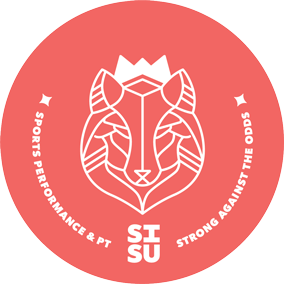
I want to start this series with my story. And for me, it starts with eliminating doubt after my surgery.
Doubt, is death to dreams for women and girls.
Following my ACL surgery in 2002, I had a single, laser-focused goal: to get back to my high school season in time for post-season play and be recruited for college. That would mean, returning to competition at 5 months post-operatively. Risky business by today’s standards to say the least [1], but I did it anyway.
Doubt, only entered my psyche when I met my physical therapist.
Why you ask? Because he told me I couldn’t do it. So I fired him and hired someone else, who wasn’t a physical therapist. A dig to my own profession, but a formative reason as to why I became a PT: To make a difference for a young girl in that same situation.
Did you know that only 17% of female athletes will return to competition, compared to 30% of male athletes following this surgery? One of the reasons cited is the differences found in psychological readiness. With males being more psychologically ready compared to females [2].
I was incredibly fortunate. I was a headstrong and confident young girl. I give my participation in sport a lot of credit for these traits. I knew about failure and I knew about success and success was up to me, NOT my providers. I was ready to defy the odds and had a mother who was ready to help me do it. Risk for reinjury be damned.
Right now, we are in a state of crisis as it pertains to women and girls in sport. Girls drop out of sport at a rate of 5x that of boys and have higher rates of injury.
Doubt is out, when it comes to working with a female athlete following ACL surgery. Period.
My main objective is to keep them PLAYING, after this is all said and done. If I don’t foster their confidence, then I have done a huge disservice to that athlete.
This means, eliminating my pull towards being the ultra conservative physical therapist that I was trained to be (and who I ultimately fired) and being fearless FOR them and WITH them in their drive (or not), to meet certain goals. It means pushing them. It also means pulling them at times. Being their coach and not being their reason to become disinterested in therapy, or their recovery because I freaked them out with statistics about risk of re-injury or statistics about not returning to play.
Autonomy and agency reign here. Women and girls absolutely need to feel in charge of their bodies, even after surgery. And fear and doubt don’t foster a female athlete’s confidence in herself and her ability to succeed.
Here are some of the things I think I got right 16 years ago:

-
I set my own goals and let my provider know what they were BEFORE my surgery
-
I found a person who would help me reach them
-
I lifted weights 3 times per week on a PLAN with my provider that focused heavily on my quadriceps, hamstrings and gluteus musculature
-
I went to practices, even when I couldn’t play, and ended up as team captain that year (we got 2nd in state)
-
I started running on my own time at about the 6 week mark
-
I kept my foot on the ball
-
I met return to sport criteria set forth by my provider
-
I had a BIG goal in mind the ENTIRE time and it never left my sight
-
I removed my knee brace after 1 month of wearing it despite my surgeon’s recommendations
-
I continued strength and speed training AFTER my “rehab” was “done”
Be fearless in your recovery after this injury/surgery.
“Find a physical therapist who makes you feel fierce and gives you the confidence you need to return to sport as a badass.” – Dr. Ellie Somers
Cheers,
Dr. Ellie
“Physio on a mission”
References:
1. Nagelli CV, Hewett TE. Should Return to Sport be Delayed Until 2 Years After Anterior Cruciate Ligament Reconstruction? Biological and Functional Considerations. Sports Med. 2017;47: 221–232.
2. Webster KE, Nagelli CV, Hewett TE, Feller JA. Factors Associated With Psychological Readiness to Return to Sport After Anterior Cruciate Ligament Reconstruction Surgery. Am J Sports Med. 2018;46: 1545–1550.
Want a physical therapist who empowers you to do great things? Feel free to send me an email or schedule an appointment today!




